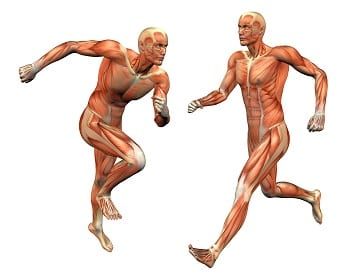Greg Presto with Shape Magazine
Hurting when you exercise? Something could be uneven (and it’s probably not what you think)
Pushing through the pain? Stop. Now.
“Pain is a medical condition and a medical issue,” says Brett Jones, owner of Applied Strength in Pittsburgh who is certified for the Functional Movement Screen, a system of tests and corrective exercise strategies. “It’s a warning sign. The pain is there to tell you something’s wrong.”
And that warning sign could be more serious than “you’re going too hard.” Jones and the other coaches consulted for this piece all had a horror story to tell—when pain in a client meant a more serious condition such as a nerve issue, thyroid issue, or even cancer. The point: If you experience regular pain while exercising—or when you’re not—go to the doctor.
If you’ve been cleared by a doc and you’re still feeling discomfort, try these simple tests to see what’s truly causing the pain—it could be related to an imbalance in a completely different part of your body. The good news: With these drills, stretches, and corrective exercises, you may be able to fix them—no doctors necessary.
Neck pain and headaches? Could be your shoulders.
If you’re experiencing these symptoms and have been cleared by a doctor, check out the height of your shoulders, says Aaron Brooks, a biomechanics expert and owner of Perfect Postures in Auburndale, MA.
“Look in the mirror and see if one shoulder is higher or lower than the other,” he says. If one of your shoulders is higher than the other, you’ll be strengthening one more than the other, and it may wind up pulled forward more than the other—resulting an inward rotation of that hand. “When you do a row or a press, that side’s going to get pinched. There’s less room in the shoulder. You can wind up with bursitis or tendonitis.” Or headaches and neck pain.
Fix it: If the mirror test shows they’re uneven, try this single-arm doorway stretch, Brooks says. To do it, stand inside the threshold of a door, and place your right forearm inside the door on the right side of the jamb, palm against the jamb at about shoulder height. In this position, twist your chest slightly through the door to stretch your chest—alternately, you can take a step forward with your right foot, keeping your left foot in the threshold. This stretch will open your chest muscles and create room in your shoulder for movement.
Pair that stretch with this mid-back strengthening exercise: Grab a resistance band and stretch it in front of your chest so that your arms are straight out to the sides from your shoulders, palms facing up. At the full extension of your arms, the band should be stretched out. Return to clap your hands in front, and repeat the movement. Pair these two moves—in this order—three times per week.
Shoulders even? Your headaches could be from a forward-leaning head.
If you don’t see an imbalance in the height of your shoulders, turn to the side, says Robert Taylor, owner of Smarter Team Training in Baltimore. If your head is jutting far forward of your shoulders, it could ultimately decrease the amount of blood flow to your head and neck.
“The head leans forward, the spine leans forward, and it puts unnecessary stress on the lower spine too,” he says. With the decreased blood flow to your thinking cap, you could get headaches.
Fix it: Increase blood flow up top and return your head to its natural, up-tall position by strength training your neck, Taylor says. Try this one-arm shrug to even things out:
Sit on an upright bench, like one you’d use for a shoulder press. Holding a dumbbell in your right hand, place your left hand under your left butt cheek and grab the side of the seat. Let your right hand hang down straight by your side and pull your shoulder blades back and together. Now raise your right shoulder up towards your ear—raise it straight up instead of rolling your shoulder. Hold for a beat at the top, and then return to the start position. Complete a set of 10, and repeat on the other side.


